Last September, I decided to use my monthly column here at Comic Book Daily to engage in a bit of armchair punditry by arguing in favour of several creators who I believe should be considered for induction into the Canadian Comic Book Hall of Fame. I was glad to see quite a bit of support in the comments section that month for one of the creators who I talked about, Vincent Marchesano, but was a bit surprised by the lack of discussion about the merit of Dave Geary, Sylvie Rancourt and Winnipeg’s original cohort of Underground and Alternative comic creators, FreeKluck.
Many months later, I have had some time to reflect on this. I have started to wonder whether the lack of discussion about my other three suggestions is due to a lack of knowledge about their works, particularly regarding Geary and FreeKluck, who I have not covered in any detail as part of Forgotten Silver. Since one of my major goals when starting this column was to highlight the forgotten and/or overlooked comics and creators of the Canadian Silver Age, I think that it is time to delve a bit deeper into these creators in the months ahead. Due to the large volume of material created by these two distinctly different armchair picks, I have decided to delve into the work of FreeKluck for the next two months. I hope to provide an overview of Mr. Geary’s work sooner than later.
FreeKluck (a wordplay on “Freak Luck”) was a collective of five men: Frank McTruck, Bobby Stahr (whose last name is usually presented as a star symbol), Basil Hatte, Roldo Odlor and Jack D. Zastre (pronounced “Zas-tree”). Several of these men used pseudonyms as part of FreeKluck. I have had the pleasure of engaging in correspondence with Roldo and Frank McTruck off and on for several years and both have provided me with a great amount of information about their activities from the early 1970s to today.
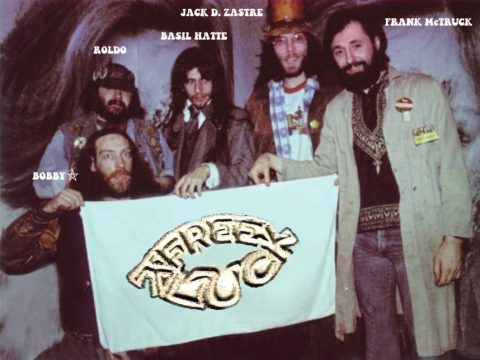
I first became interested in FreeKluck when reading John Bell’s books Canuck Comics and Invaders from the North. John Bell mentions them quite favourably in Invaders from the North, where he says:
“In 1979, a group of exceedingly prolific Winnipeg, Manitoba, artists (many of whom adopted pseudonyms) published their first efforts. This group eventually included Roldo, Basil Hatte, Jack D. Zastre, Frank McTruck, Bobby Starr, and Kenny Moran. A few years later, when they hit their stride, they would figure as the first ‘new-wave’ comics coterie in the country, though stylistically and thematically they were probably more attuned to the culture of the 1960s than that of the 1980s. What distinguished their comics was the use of photocopy technology and the adoption of such non-traditional formats as mini-comics…and digest-size comics.”
Invaders from the North, p. 125
This is some strong praise from arguably Canada’s greatest comic book researcher, who Frank McTruck once told me had been in contact with the group in the 1980s. The fact that one of the great chroniclers of the history of Canadian comics held FreeKluck in such high esteem is why I became interested in the group early during the research that Dan Bryantowich, Victor Marsillo and I have been engaged in.
In many ways, FreeKluck is an oddity in the history of Canadian comics: the group formed just as technology was making it easier to publish comics, were arguably the first creators in Canada to create their work during comic jams (which have become a standard practice among fledgling creators today) and helped to bridge the era between the Underground and Alternative comics of the 1960s and 1970s and the new wave of comics that came to dominate the independent scene during the 1980s. What makes the group something of an anomaly is that, unlike creators who produced minis in subsequent years and would become household names in broader comic circles (such as Chester Brown, Colin Upton and Julie Doucet), when FreeKluck parted ways most of the members of the group moved on to other, non-comic projects.
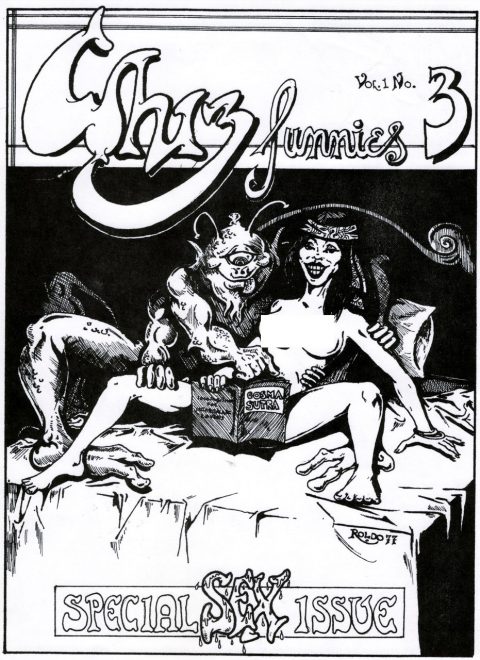
It is for this reason that Roldo is probably the most well known of the five members of FreeKluck among comic book collectors: he continued to create covers and to contribute artwork to many of the new wave comics that were coming out of the USA in the early through the mid-1980s, working with people like Clay Geerdes, Brad Foster, George DiCaprio and S. Clay Wilson.
Unfortunately, when speaking to other Canadian comic book enthusiasts, I have met few people outside of my colleagues Dan Bryantowich and Victor Marsillo who have ever heard of the group. Despite this, Frank blogs semi-regularly and has some great information about the group on his blog, Experimental Toons. Roldo also has a blog, TOOF-ARG-On Comix Worx, but it has been several years since he last posted new material. Nevertheless, a sizable sample of Roldo’s work is available on the blog, so it is worth checking out.
When it comes to the Canadian Silver Age, it is nearly impossible to talk about Winnipeg without thinking about Richard Comely and the early development of Captain Canuck prior to Comely moving everything to Alberta. The other Winnipeg connection that tends to come up is one of Canada’s longest-lasting comic book shops, Doug Sulipa’s Comic World, which is located in Steinbach (about an hour outside of the city).
It would be easy to think that Winnipeg and its surrounding area was not a hotbed of comics during this era outside Comely’s early work and Sulipa’s shop, but FreeKluck’s emergence in the early 1980s helped to establish the local comic scene for the rest of the decade. Plus, all of the members of FreeKluck were involved in comics in a variety of ways prior to the group coming together formally. In the few years that the group created comics together, approximately nineteen comics were published under the FreeKluck name. The group also helped to propel the career of one of the most prolific mini creators in Canada during the 1980s, Kenny Moran. Despite John Bell’s claim that Mr. Moran was part of the group, he was never an official member despite contributing to some of their minis. Instead, he (along with Martina Erskine, Dudley Clearsky and Loondancer, are best thought of as occasional guests who contributed to some of their minis).
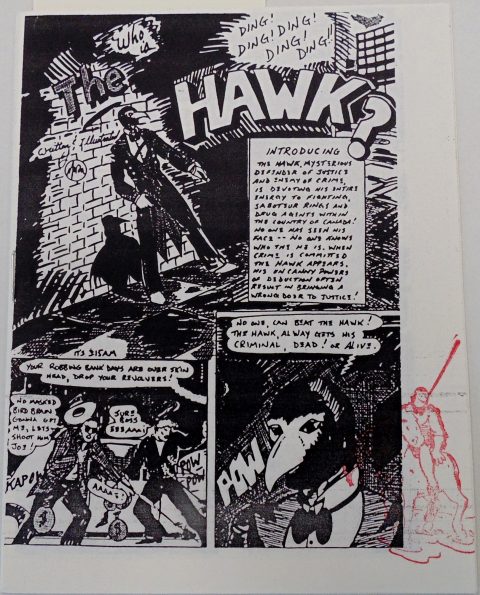
Prior to the formation of FreeKluck, all of the members were involved in the Winnipeg art, music and/or theatre scenes during the 1970s. The group came together when Frank McTruck returned to Winnipeg in the early 1980s from British Columbia. Frank’s apartment (which was dubbed “The Riverboat) became the centre of activity for the group.
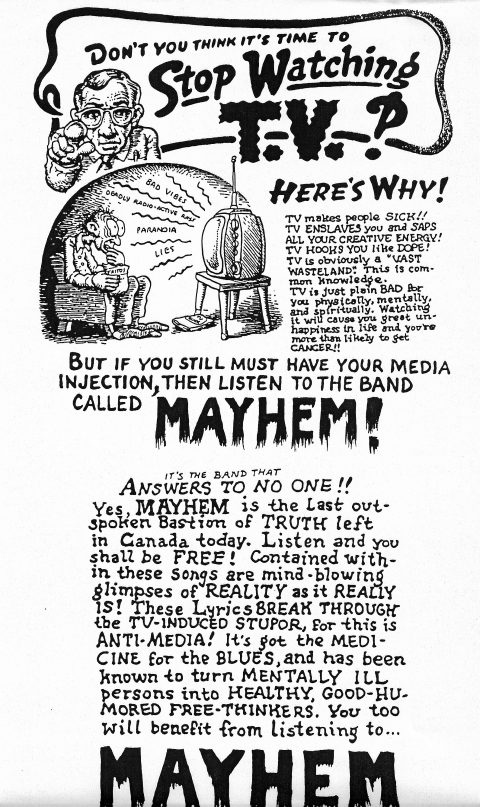
Despite the group not coming together as FreeKluck until the early 1980s, most of the men knew each other dating back to the 1960s. Bobby and Roldo played in rock bands together since the 1960s (performing as “The Jerimiah Puddleduck Hot Poot Extravaganza Presents The Louisville, Nanbasket” or “Puddleduck” for short). Frank and Jack were also accomplished musicians, with Jack and Kenny Moran playing together by 1979 in a band that Roldo once told me was called “Mayhem” (not to be confused with the racist Norwegian black metal band formed in 1984).
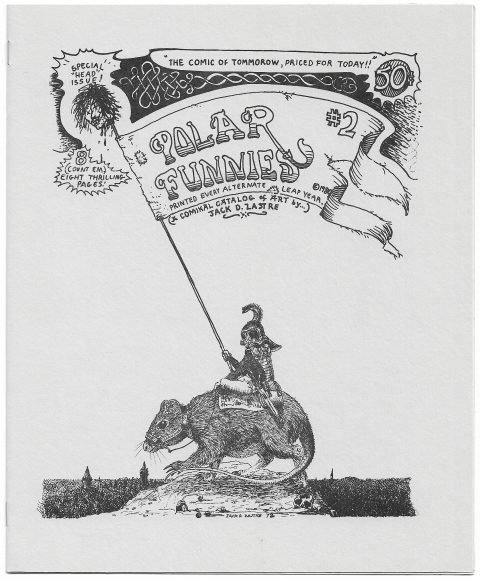
In addition to most (if not all) of the members of FreeKluck being talented musicians, the majority of these men were involved in comics in some capacity prior to the group coming together. Jack D. Zastre published the first comic book in Winnipeg during the Canadian Silver Age, Polar Funnies # 1, in 1972. This may be the first comic book ever published in the city. Mr. Zastre followed this up with a second issue in 1980, which included contributions from his brother Jim. Both of these comics are rarely seen today. Even Frank, who has kept an extensive archive of his creative works in his home, only has what appears to be a copy of the first issue of Polar Funnies on file. Mr. Zastre then moved to publishing his five-issue series of minis, Bar Wars, which serves as a parody of Star Wars. The series was published in 1980 and 1981.
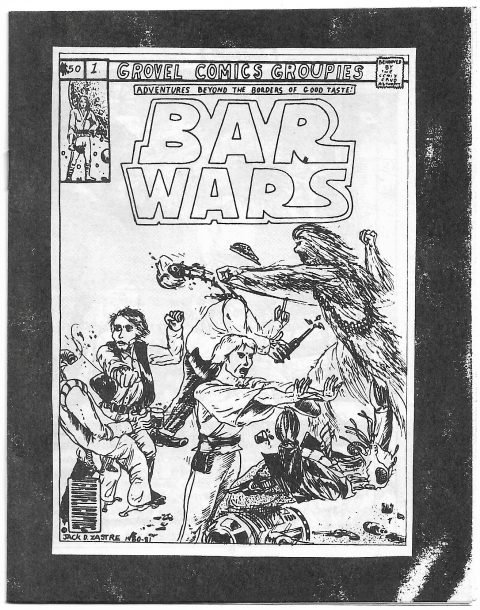
1972 also saw Frank open the first comic shop in Winnipeg. New Universe Comics was a clandestine operation that sold mainstream comics published by Marvel and DC, but specialized in Underground and Alternative comics from the late-1960s and early-1970s. It may seem strange to think about comics this way in 2020, but New Universe was forced to be a clandestine business due to the laws in Canada around crime comics that came into effect in the late-1940s (stemming from Bill 10, aka the “Fulton Bill“). The moral panic around such comics could lead to the arrest of comic shop owners and the seizure of goods by law enforcement and this became a serious issue for fledgling comic book shops in the late-1960s through the end of the Canadian Silver Age, particularly those selling Underground, Alternative and later new wave works.
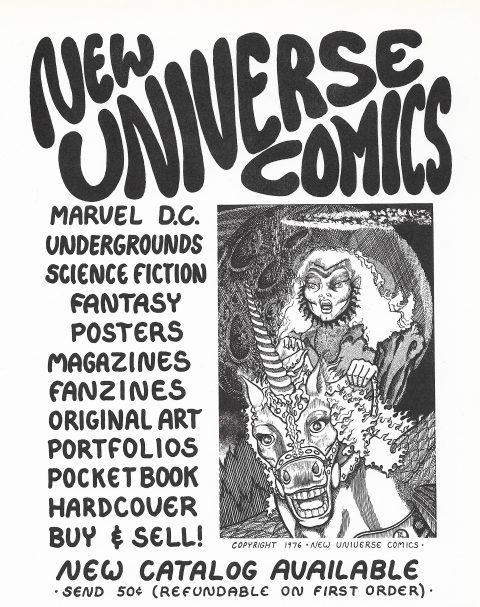
Section 163 (1) of the Criminal Code of Canada explicitly outlawed “crime comics” in Canada under the guise of obscenity until the subsection of the law dealing with comics was repealed in 2018. It seems difficult to fathom trying to operate an underground comic book shop, fearing arrest and seizure of goods, but that is exactly what Frank McTruck did until the financial risks became too great. At some point after New Universe Comics closed, Frank moved to British Columbia. I have sometimes wondered if FreeKluck would have come into being much earlier if Frank had stayed in Winnipeg for the remainder of the 1970s. I also wonder just how many similar clandestine comic shops existed across Canada during this time. Information about this topic in general is difficult to uncover and it is a real avenue for future research.
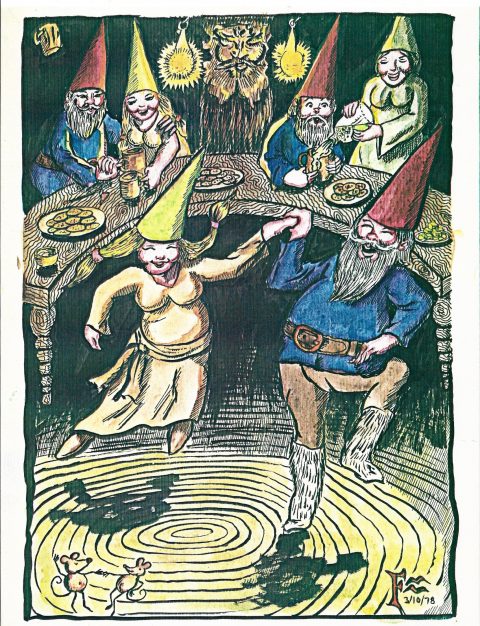
Despite this setback, Frank McTruck continued to hone his artist skills between British Columbia and Manitoba throughout the rest of the decade. He became an accomplished fine artist, despite being self-taught, working in various mediums such as pencil, watercolour, oils and charcoal. He was also an accomplished leatherworker and took courses in shoe repair. He later became well-known for his work making custom rubber stamps. Some of Frank’s fantasy artwork from the late-1970s anticipates the style that would become the hallmark of his contributions of the minis created by FreeKluck a few years later.
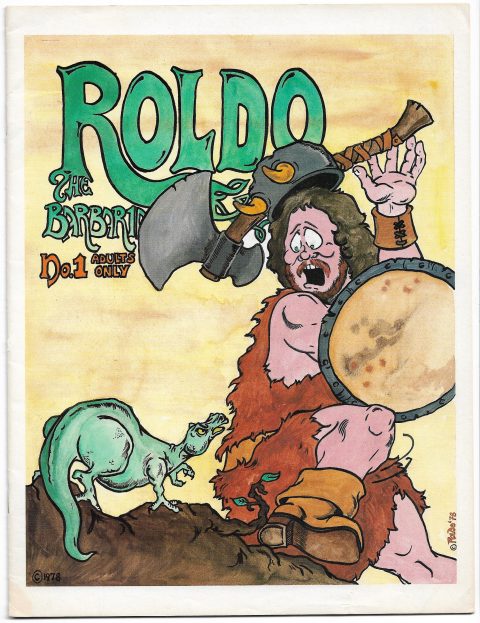
By 1978, Roldo published his first comic, Roldo the Barbarian, under the name Toof-Arg-On. He began working on his parody of the sword and sorcery genre in 1975. According to Roldo, much of the work was completed at a communal house that he shared with Basil Hatte, Martina Erskine and Bobby Stahr, which they called “Little-Bedlam-on-the-Red,” which was also the headquarters of Low Overhead Productions, which produced series of musical events. Roldo the Barbarian is the easiest to source of all of the pre-FreeKluck comics created by future members, likely due to its print run of 3000 copies. The magazine-sized work is a 28-page work of black and white comedic excellence with an Underground feel. The comic is split into several chapters. The indicia credits Martina Erskine as being an anatomical aid for “Chapter VI” and also credits Bobby Stahr for helping to develop art techniques used in “Chapter II.” All of the specimens of this comic that I have handled are signed by Roldo, but it is not clear if he signed all 3000 copies printed. It has also been rumoured that unsold copies were lost in a flood, but this is not something that I have been able to confirm.
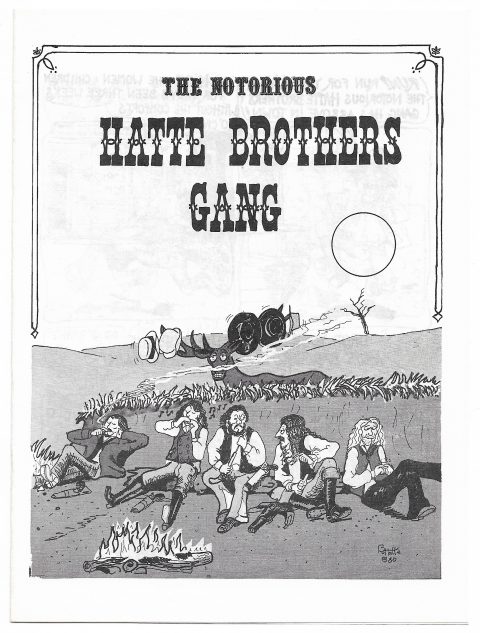
Basil Hatte also published his only non-FreeKluck comic (that I am aware of) in two printings in 1980 and 1981, the mini The Notorious Hatte Brothers Gang under the name Recent Future Productions. Much to the surprise of Frank and Basil himself, Dan learned of and has identified two variants of The Notorious Hatte Brothers Gang. The first print has pictures of plaid “Zip-A-Tone” trees on the back cover, while the second print says “special thanks to Roldo” on the back cover. The fact that there are two variants of the comic is actually noted in John Bell’s guide Canuck Comics. The artwork in the comic is by Basil Hatte with lettering by Loondancer, Mr. Hatte’s long term partner, who tragically died in 2001 and who Roldo once described to me as a true “Underground legend” of the Winnipeg art scene. This particular comic is very difficult to find. My notes suggest that the second printing had a print run of 250 copies, but this is not confirmed and the number of copies printed during the initial run is unknown.
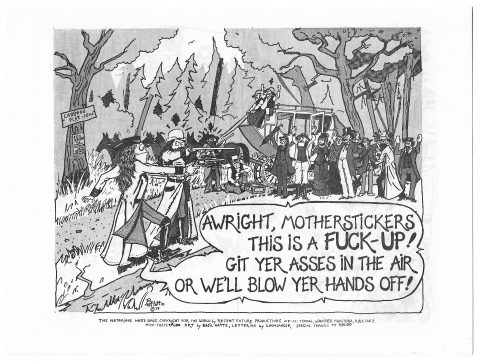
All of these early comics by eventual FreeKluck members are quite scarce. Unfortunately, the members of the group cannot recall specific details about print runs. We believe that the first issue of Polar Funnies is extremely rare and have yet to locate a specimen outside of the copy that Frank McTruck shared with us. The second issue of Polar Funnies does come up for sale from time to time and is present in the John Bell Collection at Library and Archives Canada (LAC). Indeed, much of the work published by FreeKluck members together or independently is present at the LAC.
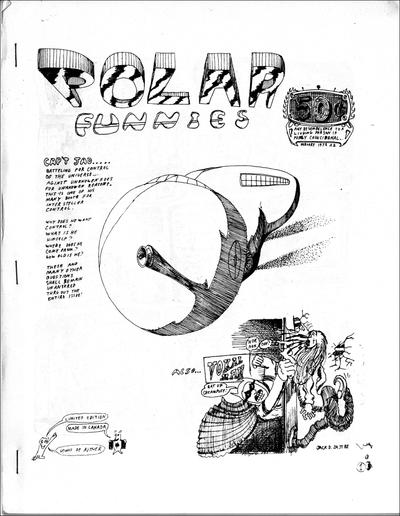
FreeKluck is a special, albeit underrepresented and often overlooked part of a transitional period of the Canadian Silver Age. The members of the group made important contributions to the establishment of the Winnipeg independent comic book scene that is sometimes mistakenly presented as the exclusive domain of Richard Comely’s more famous Captain Canuck. Individual creators who would eventually form FreeKluck were responsible for the creation of the first comic book published in the city, the city’s first comic book shop and the first semi-professional comic published in Winnipeg after Captain Canuck, all while being involved in the broader art scene in the city. I have a great amount of respect for the five men who came together as FreeKluck and I think that it is time that their creations finally get the attention that they are due. This month’s column barely scratches the surface of a decade’s worth of endeavours by five different men and I have only highlighted the comic-related efforts of their broader pre-FreeKluck works here. Next month I will take a deep dive into the works published under the name FreeKluck.

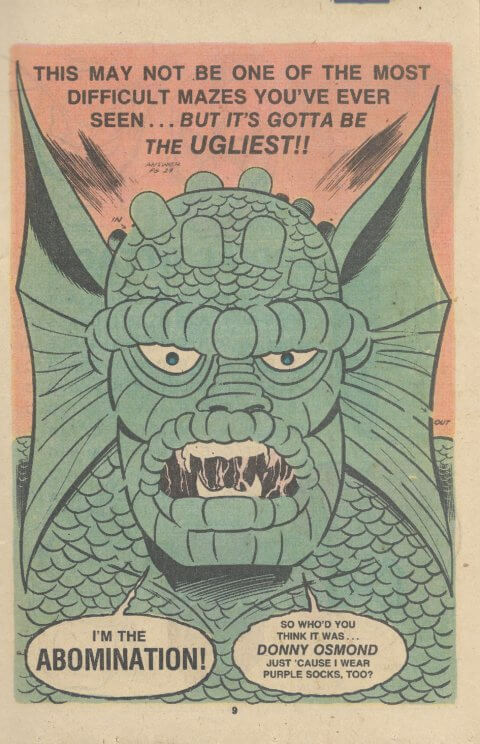
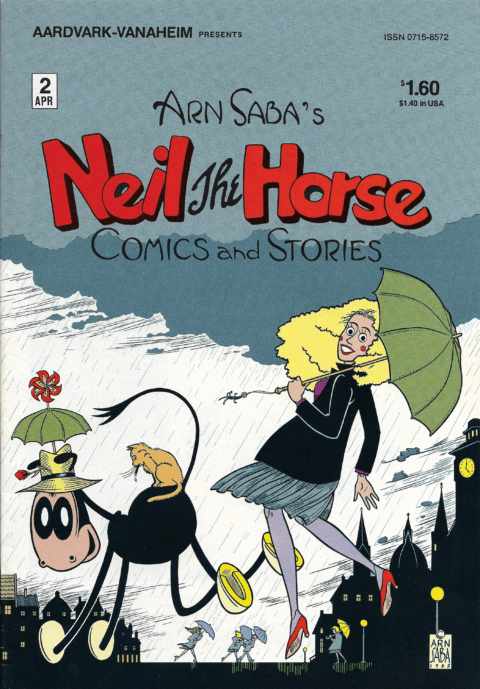
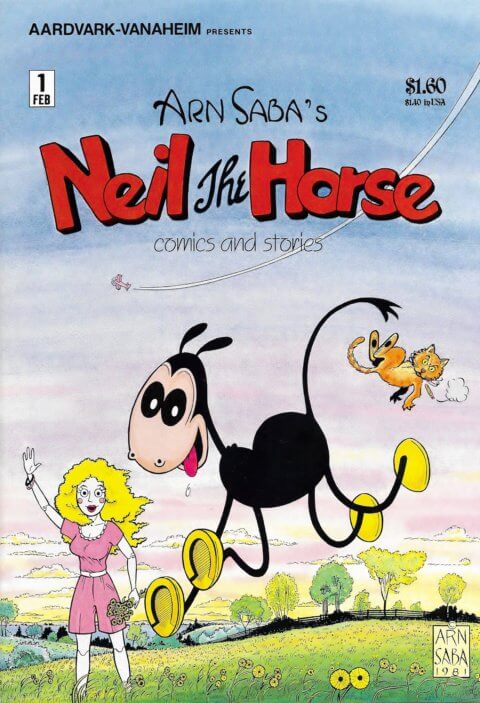
Thanks for this article on these obscure Winnipeg artists and comix. Interesting times I was not aware of. I believe the art on the Mayhem is by Robert Crumb, possibly cut&pasted from one of his comix or a retracing.
Thanks for your comment, Tim. Stay tuned for next month when I delve into the comics that the group published together.
Great suggestion regarding the Mayhem poster artwork being by Robert Crumb. I honestly assumed that the artwork was by one of the members of FreeKluck or maybe Kenny Moran. A bit of digging and it turns out that you are correct. Here is a link to the original image, by Mr. Crumb himself: https://i.pinimg.com/originals/28/aa/83/28aa83a1c464cc05a1292655ffa7e91f.jpg
Brian, Fascinating research. I was selling underground comics thru fanzine ads and my catalog during the time you cover. I recognize Roldo the Barbarian, I either handled it, or at least was sent a sample copy to consider. Polar Comics #2 also rings a visual bell. I will spend some time digging thru my collection and also that of Mr. Monster’s Michael Gilbert’s, which I bought from him several years ago. We must have one or two of these. And now I can look for anything else from the group.
The Crumb was recognizable, but the question is did Crumb himself adapt it to promote the band? The lettering is a great imitation of his style, if he did not. It’s possible, though more likely one of your creators just did a great job of adding the lettering. The lettering of MAYHEM itself doesn’t wuite say Crumb to me, but it coukd be based on their in-use logo they used elsewhere.
I like that Dingle homage, he nailed it. Looks straight from a WECA comic.
Although I started my business handing every possible underground comic, in 1970, by the period you cover I was getting more discriminating and turning down material that didn’t seem ready for prime time, so to speak. Also, although a retail store might successfully handle mini-comics…my Comics & Comix stores did…for my own mail order and wholesale, handling 25 cent or 50 cent mini’s was just not practical. I steared clear of nearly all of these.
That image from the back cover of The Notorious Hatte Brothers, and the style itself, looks VERY familiar. I hope you will run more of Hatte’s work, I like it and I think I have run across it before.
Your work here really puts a whole new perspective on these artists and their publications.
BTW, what’s the actual years you consider to be the Canadian Silver Age? Until now, Richard Comely’s work is most of what I know of the era, along with a few fanzines or semi-pro magazines that I would have handled. I always admired Richard’s persistence in promoting the self-published Canuck. And I liked the high quality work of his and that of George Freeman. I handled all of the early Captain Canuck comics, buying them directly from him for retail and wholsale sales.
Thanks for chiming in, Bud, and for your kind words. Also, thanks for providing some insight into how you treated minis back in the day. I am not surprised that you opted against carrying minis as part of your mail order business, especially given the proliferation of these comics in the 1980s and what I perceive to be a lack of a strong market for such titles at the time (with, obviously, some exceptions).
I would not be surprised if you have handled Roldo the Barbarian and Polar Funnies # 2 at some point in the past. As I mention in this column, Roldo the Barbarian had a sizable print run for a comic of its ilk and is a semi-professional comic book. The comic also comes to market fairly often.
Thanks again to Tim for pointing me in the right direction regarding the Mayhem poster artwork. I assume that the members of Mayhem merely copied the artwork and text from Crumb and then added their own text and Mayhem logo. From what I understand, Roldo was not associated with this band and he was working with some of the American Underground creators who I mention yet. Also, in my conversations with Roldo and Frank McTruck, Crumb never came up.
I am not aware of any comics that Basil Hatte worked on outside of The Notorious Hatte Brothers Gang and his work with FreeKluck. However, he is a talented artist. Next month, I will share some artwork that he did after FreeKluck as part of a film project he worked on with his brother, the late T.H. Hatte.
To answer your question about the Canadian Silver Age, I treat the era differently from John Bell. Bell paints the Silver Age as beginning with the publication of Captain Canuck and ending in 1988 with the black and white comics crash that led to the closure or sale of the handful of Canadian comic companies that had national (and even international) distribution, such as Vortex, Aircel and Strawberry Jam. I define the era in broader terms, beginning with the first new comics published in Canada after the end of the Golden Age (likely with giveaways published by Ganes Productions) and ending with the creation of Drawn & Quarterly. So, I define the era as starting c. 1960 and ending c. 1990. Neither my definition nor Mr. Bell’s are perfect and Bell conducted excellent research regarding the giveaways from the 1960s and the alternative and Underground comics that predate Captain Canuck.
Ahh, Aircel actually had a good run for me. I remember Vortex Magazine, but a comics line of that name temporarily escapes me. I was a distrbutor of alternative stuff, fanzines and UG comics from nearly my start in 1970, but didn’t do REAL comics, i.e. Marvel, DC and Archie, until i lept into that world in 1982. I was around much earlier when Dave Sim made Phil Seuling his exclusive U.S. distributor. I remember taking 1500 of each new issue, and slowly filling my garage with leftover back issues. They all sold, though.
Dave had a big falling out the comics distributors in general in the eighties, can’t quite remember the why of it. Maybe something to the effect we were making too much off his books. But he’s always been a character. I got along well with Deni Loubert and supported all her independent b&w line. Lotta fun titles. Wonder where she is now? I think the story was she rode off from San Diego Con with Bill Sienkiewicz one year, that was her split with Dave….?
Frank McTruck messaged me this morning to help clarify what is going on with the Mayhem poster. Here is what he said:
“Jack and Kenny were playing for a few months when I joined them. It was during one of our jams called “workin’ on a hammer” that I introduced the band as “Mayhem!”. The Crumb “Mayhem!” poster was something I did for Jack and Kenny, years later when I was producing songs from old cassette tapes of our jams. I should add that the jams were all spontaneous creations. Kenny was eager to try out songs that he had no music for and Jack had a fantastic knack for creating lyrics on the fly. I had no idea what they were going to play so I would try different things (like the intro to “the sunshine”) or with a lead rhythm line on the harp and one of them would just effortlessly go into another song. All 27 of the Mayhem! songs are from just a few jams and we never played the same song twice.”